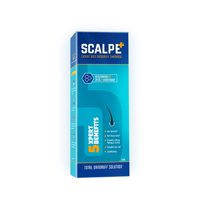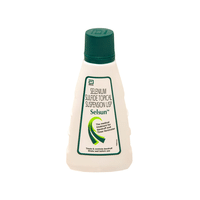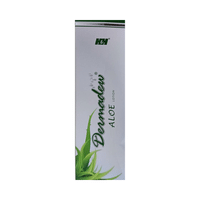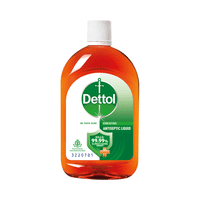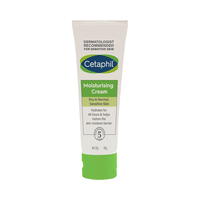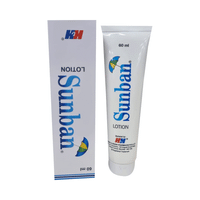Clotrin Mouth Paint
Rs.202.50for 1 bottle(s) (15 ml Mouth Paint each)
food interaction for Clotrin Mouth Paint
alcohol interaction for Clotrin Mouth Paint
pregnancy interaction for Clotrin Mouth Paint
lactation interaction for Clotrin Mouth Paint
food
alcohol
pregnancy
lactation
No interaction found/established
No interaction found/established
$med_name is generally considered safe to use during pregnancy. Animal studies do not indicate harmful effects. However, there are limited human studies.
SAFE IF PRESCRIBED
Available human data suggest that the drug does not pass into breast milk in clinically significant amounts and is unlikely to harm the infant.
SAFE IF PRESCRIBED
SALT INFORMATION FOR Clotrin 1% w/v Mouth Paint
Clotrimazole(1% w/v)
Clotrin mouth paint uses
{med_name} is used in the treatment of fungal infections and fungal infections of mouth (Thrush).
How clotrin mouth paint works
Clotrin Mouth Paint is an antifungal medication which treats fungal infections of the mouth. It works by binding with the mucosa (the inner surface of the lips and cheeks) from where it is slowly released into the saliva. The fungal cell membranes are destroyed thereby killing the fungi.
Common side effects of clotrin mouth paint
Blisters, Skin peeling, Swelling, Application site irritation, No common side effects seen
SUBSTITUTES FOR Clotrin Mouth Paint
28 Substitutes
28 Substitutes
Sorted By
- Candid Mouth Paint(25 ml Mouth Paint in bottle)Glenmark Pharmaceuticals Ltd.Rs. 6.80/ml of Mouth Paint
 Rs. 177.60save 50% more per ml of Mouth Paint
Rs. 177.60save 50% more per ml of Mouth Paint  Rs. 112.50save 44% more per ml of Mouth Paint
Rs. 112.50save 44% more per ml of Mouth Paint Rs. 109.35save 46% more per ml of Mouth Paint
Rs. 109.35save 46% more per ml of Mouth Paint Rs. 70.30save 76% more per ml of Mouth Paint
Rs. 70.30save 76% more per ml of Mouth Paint Rs. 70save 66% more per ml of Mouth Paint
Rs. 70save 66% more per ml of Mouth Paint
Expert advice FOR Clotrin Mouth Paint
- Do not skip any doses and finish the full course of treatment even if you feel better.
- Once you apply the medication, wait for at least 30 minutes before eating and drinking anything.
- Avoid getting it in the eyes, nose, or mouth. If accidental exposure occurs, rinse immediately with plenty of water.
- Inform your doctor if the infection has not cleared up after four weeks of treatment.
- Inform your doctor if you are pregnant, planning pregnancy or breastfeeding.
- Few tips to prevent infection:
- Keep your feet clean and dry, particularly between the toes.
- Cut your nails short and prefer open-toe shoes for everyday use.
- Keep your vagina clean and dry.
- Use a separate clean towel for the infected area.
- Take a shower with antifungal soap after gyming or severe sweating.
- Never share your socks, shoes, and towel with others.
- Apply a sufficient amount to cover the affected area and 1 inch of the immediate surrounding skin.
- Avoid getting it in the eyes, nose, or mouth. If accidental exposure occurs, rinse immediately with plenty of water.
- Inform your doctor if the infection does not clear up even after four weeks of treatment.
- If used topically on the nipple area, wash breasts before feeding your child.
- Your doctor has prescribed Clotrimazole to cure your infection and improve symptoms.
- Do not skip any doses and finish the full course of treatment even if you feel better.
Frequently asked questions FOR Clotrin 1% w/v Mouth Paint
Clotrimazole
Q. What is Clotrin Mouth Paint?
Clotrin Mouth Paint is an antifungal medicine which is used to treat a wide variety of yeasts and yeast-like fungi. Clotrin Mouth Paint works by damaging the cell membrane of fungi like Candida, thereby stopping its growth. It is used for the prevention and treatment of Candidal infections of the oral cavity, esophagus and intestinal tract. Most commonly, it is used to treat oral thrush (affecting inner lining of mouth) caused by Candida albicans. It is important to know that Clotrin Mouth Paint is not effective against bacteria, protozoa, or viruses.
Q. Is Clotrin Mouth Paint used for thrush?
Yes, Clotrin Mouth Paint is used to treat oral thrush. Thrush is a fungal infection commonly seen in babies and older adults. Consult your doctor if you do not see any improvement after 1 week of treatment with Clotrin Mouth Paint.
Q. What is Clotrin Mouth Paint used for?
Clotrin Mouth Paint is an antifungal medicine. It is used to treat fungal skin infections such as ringworm (fungal skin infection that causes a red scaly rash on different parts of the body), athlete’s foot (fungal infection of the skin on the feet and between the toes), fungal nappy rash and fungal sweat rash. It is also used to relieve irritation of the vulva (external thrush) and irritation occurring at the end of the penis, which may be associated with thrush.













